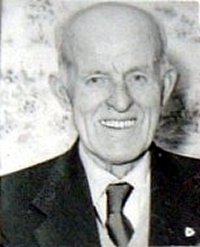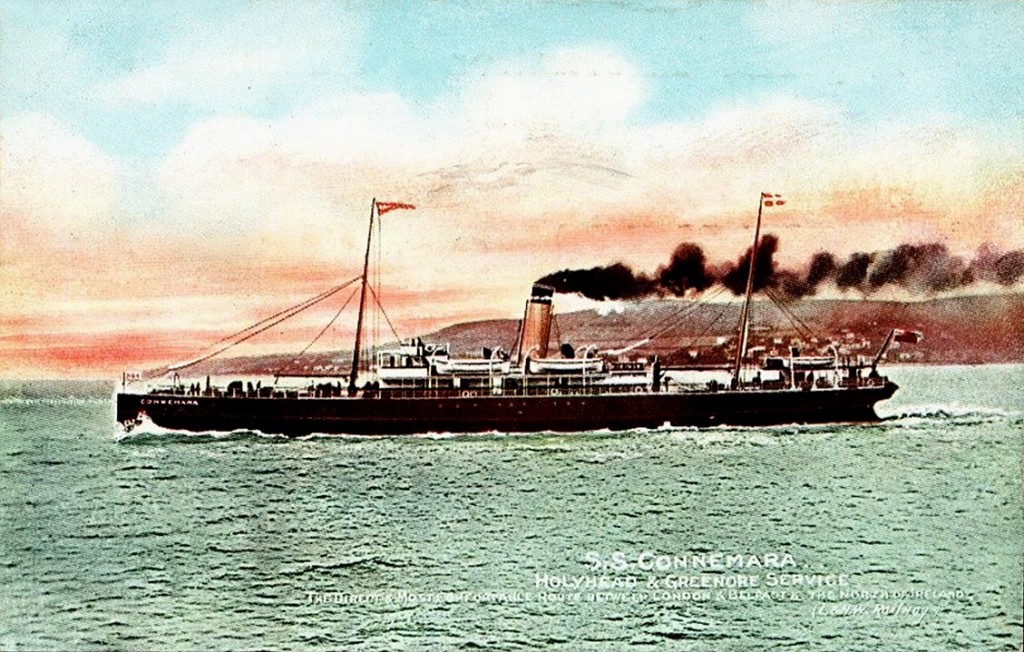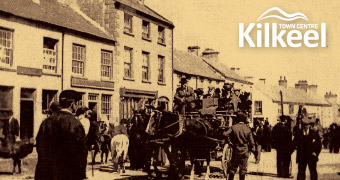This disaster was the largest shipping tragedy in Carlingford Lough, resulting in the loss of 94 lives.

The SS Connemara was owned by the London and North-Western Railway Company and its Captain GH Doeg and crew of 30 all came from Holyhead in Wales. The passengers on board included soldiers from The Front returning to the Great War along with people from counties Sligo, Longford, Monaghan, Cavan, South Armagh, Louth, Down and Antrim along with livestock and their porters. There was 17 young women onboard who were intending on travelling to Canada via Liverpool. Many others were emigrating to America and Australia.
The Retriever was owned by the Clanrye Company and had a crew of nine. The Captain was Patrick O’Neill from Kilkeel, Second Mate was his son Joseph and one of the seamen was his son-in-law Joseph Donnan. The only survivor of the disaster was fireman James Boyle from Warrenpoint. The others onboard were from Newry.
The Collision
The weather on the night/early morning of the incident was very bad and many thought the Connemara would post-pone its journey. Unfortunately it did not.
The Retriever left Garston for Newry loaded with cargo at 4am but was running late due to the gale force winds. The Connemara left Greenore shortly after 8am bound for Holyhead. About two and a half miles from Greenore she passed the Hawbowline lighthouse. The watch at the lighthouse saw the two ships coming too close and fired off rockets in warning. The Retriever struggled against the gales with its unsteady cargo to avoid the Connemara but a huge wind swung it into the side of the ship, smashing it from hull to funnel. The ships locked together for a moment but the Retriever had reversed her engines seconds before the collision causing it to swing wide leaving the Connemara open amidships. It sank within minutes followed by the Retriever, killing 94 souls.
Aftermath
The sole survivor James Boyle was 21 years old when he was present on the ill-fated journey of the Retriever. He was rescued by local men William Hanna and Hugh Doyle after being alerted by Peter Morgan.

On the beach the men saw livestock desperately battling the waves to reach the shoreline. By the early morning it became clear how widespread the tragedy was with more livestock wandering the beaches along with bodies being washed ashore. The bodies were collected in carts by local farmers and a temporary morgue was set up in Nicholson’s shed.
Unfortunate Twists of Fate
A Mr Patrick Kearney and his wife Kathleen Kearney were killed in the tragedy. They were on their way to meet their sister in Liverpool and while waiting in the train station in Newry they met RIC Sergeant Fitzpatrick who told them it was likely that the Greenore boat wouldn’t sail due to the poor weather. He suggested they go to Dublin instead. Mr Kearney decided to flip a coin and the result was that they would head to Greenore.
A man called Henry Tumelty had arrived too late to board the Retriever at Newry. He decided to cycle three miles along the canal and jumped on board as it sailed past the locks at Fathom. He was also lost.
James Curran was a passenger on that fateful night and he had a dream pre-telling of the disaster. He was a strong swimmer and had often swam alone from Rostrevor to Carlingford. The night before he sailed he had a dream that he was a seaman crossing to join his boat at Liverpool but he never reached his destination. He dreamt he was rowing a punt in heavy, stormy seas surrounded by pigs and cattle. His boat capsized and he landed ashore where he was streaming with blood. When he told his dream to his family and friends they begged him not to sail, but he dismissed their fears. An hour before he sailed he noticed that he needed a new button on his shirt, so he replaced it.
His body was found on Cranfield beach and was identified by the newly sewn button. He was taken back to Rostrevor and was buried on 7 November.
Memorial
Some of the unidentified bodies were buried in a mass grave in the Old Church Yard of Kilkeel. Kilkeel High School erected a headstone in their memory in 1981. Greenore Greencastle Community Association erected a memorial granite seat in Greenore in 2006.
For more information see booklet published by the Kilkeel Development Association and the Greenore Greencastle Community Association, available from Kilkeel Visitor Information Centre.



